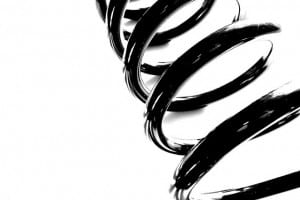The ingenuity of the coil spring function is in its simplicity, for it is the essence of what a coil spring truly is. Found in numerous products, the coil spring is not simply a mechanical device, but an integral component necessary for those products to function. Manufacturers, companies, and entire industries rely on coil springs for use in the production of tools, devices, goods, machinery, equipment and numerous other products. Applications are seemingly endless, and range for use in everything from auto parts, cell phones, garage doors, machinery, and pogo sticks to buildings, bridges, clocks, medical devices, mouse traps, toasters, and trampolines.
Coil spring designs vary. However, all are made by bending a strand of wire into a multi-turn, helical coil. Through continuous turns, that strand of wire is formed into a helix that is converted to an energy storage mechanism. The three most common types of coil spring designs used in applications are the compression, extension, and torsion. Let’s have a closer look:
 Compression Springs
Compression Springs
The compression spring is by far the most common type of coil spring manufactured. They are used as shock absorbers, vibration dampeners, pure energy accumulators, or force generators and are generally fitted over a shaft or positioned between two objects. As the name suggests, compression springs provide resistance as the coils are compressed by an external force, as in a vehicle’s suspension system. When compressed, the coil creates the mechanical energy required to carry a load, hold weight or absorb a force through resistance. Once the external force is removed, the spring will expand, releasing its stored mechanical energy and return to its original position.
A compression spring’s most notable physical characteristic is the visible spaces between the coil—they do not contact each other. Referred to as the pitch, when the distance between the coils are compressed mechanical energy is stored until the force is removed, which then allows the spring to expand to its original size. If coils come into contact with each other the load is either too heavy, which indicates a design flaw, or the spring has failed and its service life has ended.
An extension spring, also referred to as a tension spring, realizes its energy potential from the tension that occurs when it is stretched, pulled or elongated. Unlike compression springs, the coils of an extension spring are tightly wound and contact each other. The tighter the coils are, the greater resistance and tensile force when pulled.
Because extension springs are designed to attach components to each other, a hook or eyehook is affixed to each end of the coil. Once the spring is attached to either component, the tension and resistance controls constant energy. The further the spring is extended, the greater the resistance and energy are released. Any visible signs of pitch between the coils indicate that the spring’s service life has ended. Extension springs are used in farm equipment from tractors to combine harvesters, in washing machines to stabilize the drum, in most baby carriages, and they provide the bounce for trampolines.
Torsion Springs
A torsion spring is another type of coil spring used to store and release energy. However, where other coil springs react to compressive or tensile forces, a torsion spring stores its mechanical energy when a torque force is applied. Rather than being pushed or stretched then, the load of a torsion spring is derived when the end of the coil is twisted or rotated on its axis. As a rotational force is applied, the coils are wound tighter, thereby providing the required power for the spring. The tighter the helix is wound, the more energy is stored in the coils of the spring. Once the coils have been rotated into position, upon release, a proportional force is exerted in the opposite direction equal to the force that was applied—think mouse trap!
Torsion springs are found in mechanical assemblies such as hinges, counterbalances or levers and are and used in automobile doors, agricultural equipment assemblies, tailgates on pickup trucks, and industrial heavy-duty equipment. Everyday applications include screen door hinges, window shades, ratchets, levers, clothes pins, clipboards, and garage doors.
The coiled spring is an indispensable component used to store mechanical potential energy. In today’s world, they are found in nearly every industry. For more information, contact James Spring & Wire Company. We design and manufacture standard and custom coiled springs for industrial and commercial applications for Original Equipment Manufacturers (OEM).

